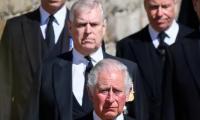August 17 marks the death anniversary of General Ziaul Haq, Pakistan’s longest serving ruler. Having ousted the country’s hitherto most popular leader ZA Bhutto in a coup on July 5, 1977, Zia set out to refashion a liberal republic into a retrogressive dictatorship – all in the name of Islamization. Towards that end, he introduced sweeping changes to the constitution. Some of those changes, such as empowering the president to sack the National Assembly at his discretion, were subsequently reversed by parliament.
Other amendments, such as those pertaining to the qualifications and disqualifications of the legislators to make sure that only ‘sadiq’ and ‘ameen’ (the truthful and the honest) members return to the assemblies, remain on the statute book. Already, these virtually unattainable – if applied in letter – qualifications have led to the disqualification of one serving and one former prime minister. And let’s not forget that thanks to the Zia era’s constitutional engineering, our parliament is still called ‘Majlis-e-Shura,’ which by definition is a consultative, and not a law-making, body.
However, it’s the Zia regime’s attempts – which were largely successful – to rewrite the national culture, particularly its political offshoot, that forms the key component of its lingering legacy. The rise of populist leader Imran Khan a generation after Zia’s demise is the most significant manifestation of this legacy.
Every polity sets its political ideals, which provide a framework for political action by defining what’s desirable and legitimate. To paraphrase, to what purpose does a political society exist: welfare of the people, attainment of a transnational objective, domination of a particular creed or community, or putting in place a fearsome security apparatus? What is a legitimate government: one which is elected by the people; or one which captures power by force? Do personalities or institutions, decrees or laws matter?
In light of political ideals, goals are set, priorities assigned and resources allocated. Political ideals may also define a nation’s heroes and villains. Through propaganda and indoctrination, the heroes are eulogized and the villains vilified. This process often entails distorting history and suppressing the facts.
A mechanism needs to be put in place to pursue these political ideals. Democracy seeks to attain those ideals by building credible institutions. Dictatorship, being a highly personalized form of government, puts its trust in strong personalities. Institutions are deliberately weakened to make room for the rise of a strong leader, who would like to wield unchallenged authority and rule by decrees.
The Zia regime defined political ideals in terms of religion. That wasn’t surprising. Being the head of an illegitimate regime, the general turned to religion to legitimize it. The legitimization entailed not only dismantling the ‘corrupt’ political system but also overhauling the ‘decadent’ national culture. Towards that end, a singular narrative was constructed.
According to that narrative, the world presented a spectacle of incessant struggle, with the antagonists out to obliterate Islamic culture and values in the name of freedom of expression, human rights and fundamental liberties. It was the duty of every Muslim to fight the evil forces to frustrate their nefarious designs. The war had to be fought on all fronts: political, economic, cultural, ideological and military.
Pakistan, so went the narrative, was the only ideological state created for the propagation of Islam. However, successive governments succumbed to Western pressure and disregarded the objective of the creation of the country. As a result, said the narrative, society was westernized, secularized and vulgarized. It became a hotbed of corruption, obscenity, and injustice. In Zia, however, a great ‘Mard-e-Momin’ took over the reins of powers and started Islamization of society. His regime was destined to be the golden era of Pakistan.
This narrative set the stage for the sacralization of politics in which one is either a believer or a heretic, either clean every inch or corrupt to the bone; introduced a political culture in which the rivals are branded as morally bankrupt, wicked, and traitors, who couldn’t be trusted with the reins of the government; laid the foundations of a sanctimonious society in which those who profess a different creed or practise a different moral standard are looked upon as an incarnation of evil, who must either be forcibly converted or eliminated; and encouraged the rise of private armies or lashkars both to wage jihad and encourage others to do so.
In the eyes of his supporters, the Mard-e-Momin ‘spearheaded’ the ‘Muslim’ resistance against the advance of communism and forced the demise of the great ‘evil’. Not surprisingly, during the 1984 presidential referendum, the voters were put the question: did they support Gen Zia’s services for Islam? More than 98 per cent of the voters replied in the affirmative, and the incumbent was elected president for five years. The choice between electing or not electing Zia to the highest office of the state – essentially a political question – was thus cloaked in the garb of faith and made into a religious question.
All the resources of the state and of the nation were employed in service of the narrative. Notwithstanding that, in the 1988 elections, held some three months after Zia’s tragic death, that narrative was beaten, when a political party – the same which was removed from power in the 1977 coup – with liberal credentials emerged victorious. But it turned out to be a case of winning a battle but losing the war. A whole generation was being socialized into the Zia regime’s narrative, looking for another Mard-e-Momin to rid society of all evils.
The regime’s legacy provided a fertile ground for the rise of two types of organizations: terrorist outfits like the TTP, which look down upon both majority rule and democratic culture and aim to set up an ‘Islamic’ state by force. And, second, mainstream political parties, which owe allegiance to the majority rule but in practice dismiss democratic culture as a sign of moral weakness. Both types of organizations show zero tolerance for the opposition, brand their opponents as heretics or traitors, eschew conflict resolution through a dialogue; seek to subordinate the institutions to their whims and agree to play ball with them only on their terms; and claim on being a noble mission to rid the society of all evil, that’s to say to overhaul the national culture. With so much in common, the two types of organizations were destined to be natural allies.
During Zia’s life and until a few years after his death, Nawaz Sharif remained the undisputed inheritor of his legacy. But gradually, he distanced himself from the influence of his erstwhile mentor. That didn’t mean that the legacy would fade into oblivion. The seeds that the regime had sown had grown into a crop. Someone was needed to reap it. It fell on cricketer-turned-philanthropist Imran Khan to do so.
Like Zia, he made morality the leitmotif of his politics, ascribed all the ills of the country to corruption and dynastic politics, made full use of religious symbols, and promised to set up a heaven on earth. Khan had one thing which Zia lacked: charisma. Khan lacked one thing which Zia had: the unflinching support of the powerful institutions. That’s why, despite his charisma in the initial years of his political career, he remained a nonentity. But eventually, luck smiled on him and he became the blue-eyed boy of the mighty. It was then that his charisma came into full play. If Zia was only the pope, Khan became both the prince and the pope – a most enviable combination.
An unmistakable sign of Khan being the ideological successor to Zia is the institution of the Single National Curriculum (SNC) by the former’s government in 2020. Education is the most effective way to overhaul a nation’s ethos. The SNC followed closely Zia’s policies in making schools the platform for inculcating ultra conservative values to the detriment of critical thinking.
After his phenomenal rise, Khan fell from grace. But that doesn’t mean that as a political leader he is past his shelf life. The Zia legacy is as potent today as it was at any other time. And to date, Khan is the undisputed successor to this legacy.
The writer is an Islamabad-based columnist. He tweets @hussainhzaidi and can be reached at: hussainhzaidi@gmail.com
There is no information if rowdy Pakistanis involved in such incidents were actually dual nationals
This year alone, US Treasury would have to roll-over $10 to $14 trillion in maturing short-term debt
Tear gas no longer marks just protest sites; it paints entire cities as battlegrounds but then again, PTI did it first
Political structures and governance systems have been central to economic and social development
It is confirmed now 40 Pakistanis had died after boat of migrants had capsized in sea near Greece
Many people believe that in future, AI will play an even more significant role in their lives







